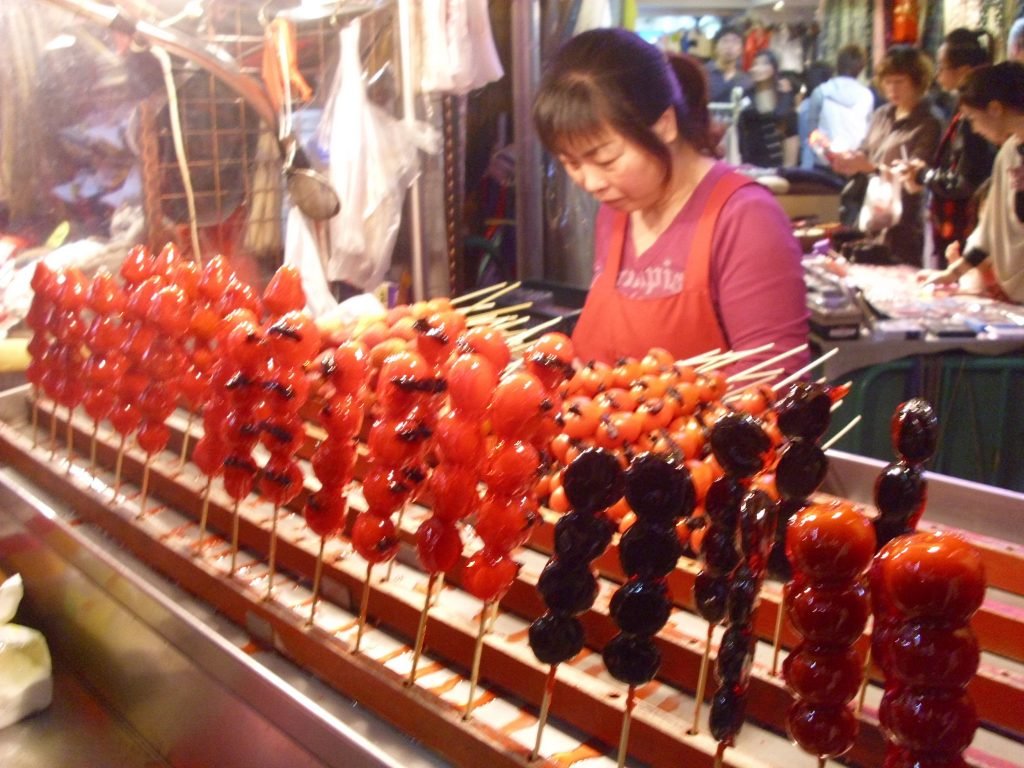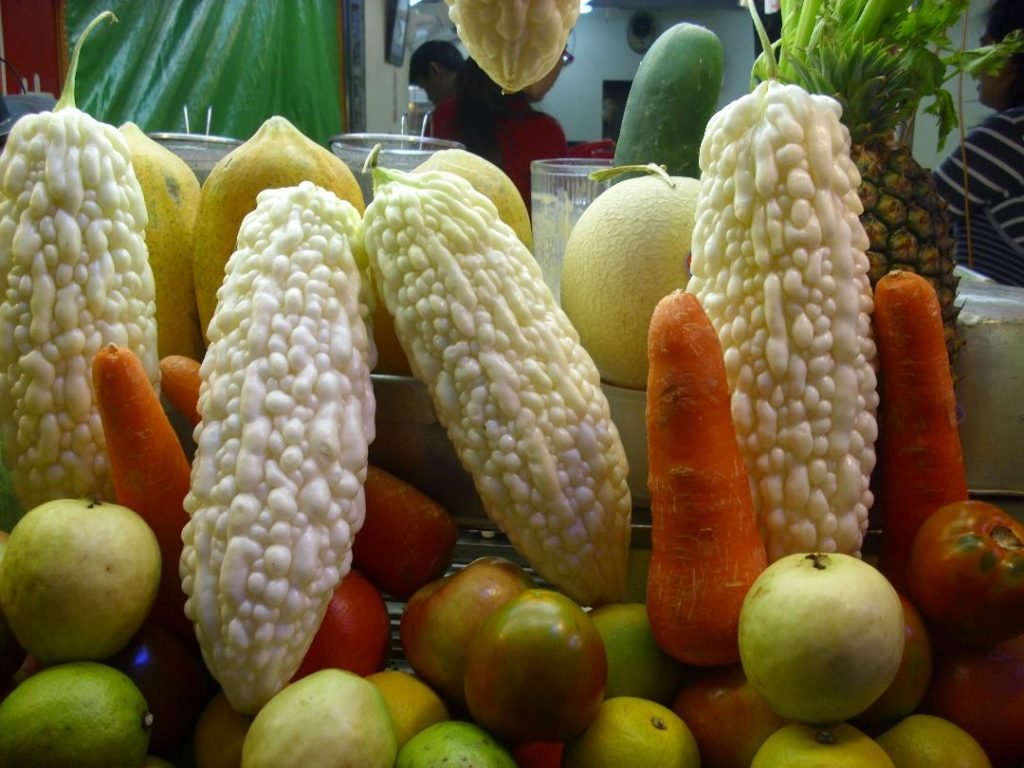Mom’s favorite travel tale is that forty years ago when she and Daddy travelled for two months around the world, one of the Asian destinations was Taiwan. In Taipei, she saw a food stand selling piping hot dumplings and she wanted to buy some. Out came the cook in his dirty, greasy, and sweaty singlet. At the sight of the man, my mother said that she had changed her mind. Until I went to Taiwan myself, Mama’s image of Taipei was not positive. Still many things can happen in forty years and, boy, many things have changed.

My cozy party of three had one important thing in mind when we planned our trip to our neighbor. It was going to be a food trip primarily. Taiwan IS famous for its food. The Taiwanese are probably our (Negrenses) Oriental versions of the Filipino foodie. Food in Taiwan, we discovered, is simply good. Even street food. Sometimes, especially street food.

For one, Taiwan is tops in agriculture. Fruit lovers will enjoy a whole rainbow of reds from strawberry, cherry (quite expensive as it’s off-season), dragon fruit, persimmon, apple, plum, grape, and pomegranate. Pears are huge enough for me to cradle one in both my hands. It is cheaper to buy in small alleys rather than in strategically located fruit shops. Vegetables, too, are a-plenty and I had my fill of greens the names of which I can only guess at. Our breakfast buffet at Yomi Hotel where we were billeted for three nights guaranteed us a tummy-filling, stomach-busting choice of local cuisine for three mornings. Crunchy seaweed, spicy tofu, alfalfa sprouts, pea sprouts, finely shredded pork, dried gluten, white fungus soup sweetened with dates…each meal was pleasant, replete with pleasant surprises.

The cheapest lunch (NT$50 each) we had was during a trip to Longshan Temple. Just across this important Taipei site is a row of vendors enthusiastically selling plum tea (loved it!), ground squash seeds and almonds mixed into a drink, dried honeyed fish with sesame seeds, shredded pork, dried kumquat, dried olives, and dried persimmons among a wide range of goodies. By the time we reached the end, we were a bit full from all the food-tasting. So, we could only buy two skewers of shrimp rolls and a glass of weird-looking seeds with an equally weird taste. My motto, as usual, was “the stranger, the better”. Therese refrained from buying it because it reminded her of frogs’ eggs or little googley eyes. The problem with my food trip was that I couldn’t get the vendors to explain to me in English what they are.

The most expensive meal at NT$855 for the three of us was at the San-Hsi-T’ang Teahouse of the National Palace Museum. The museum is to Taiwan what the Louvre is to France. The quality of food at the Teahouse is superb and very reasonably priced. Our favorites were the Sprouts Roll (NT$135) advertised as a “simple dish in Southern Song Dynasty”, Glutinous Rice wrapped in lotus leaf (or our ma-chang), and the dumplings. I had to try the plum juice which was thick and fruity. Takes some getting used to but at least I did try it.

Now, the street food at Shilin Night Market. You can buy sugarcane juice either hot or cold with calamansi. My Facebook friends laughingly guessed that the sugarcane must have come from Negros. Again, the language barrier prevented me from being inquisitive there. What I enjoyed most of all was the skewered fruit coated in hardened caramel just like toffee apples. Choose from ripe juicy strawberries, fleshy plum tomatoes, sweetish small plums, and tiny pears. That was unforgettable! The tomatoes were made more “Chinese-y” by slitting each once and inserting slivers of plums that tasted like dikiam. Some friends of mine in Bacolod advised me to try the oyster omelet and the chicken steak, but I had a good dinner before my shopping so food was not foremost on my mind. Instead, I was beguiled by the rows and rows of shops selling wares so I totally forgot to also look for the stinky tofu and the scallion omelet. Ruth had an almond drink which was not to my liking. She was also intrigued by the vat of boiled eggs floating in an herbed soup. But she, too, was full. Therese, the night before, was going to buy black steamed corn but she held back. At Shilin, she finally gave in and bought a good-sized cob brushed with some sort of condiment. Inday Therese, at last, happily munched on her NT$100 corn-on-the-cob during the cab ride back to the hotel.

What makes buying street food in Taipei more palatable not only for the locals but also for the foreigners is the relative cleanliness of the vendors. The fear of contracting a virus is abated by the neatness of the seller and the uncluttered environs. Sidewalk vendors also sell braised meats and organs on a stick but even if the whole stock is left uncovered on the table, no fly is seen alighting. So, Mother, dear, gone is the image of the sweaty, grease-stained man-in-a-dirty-singlet that crowds your memory of Taipei. In his stead are the cleaner, apron-ed vendors that I saw who enable the locals to enjoy their favorite hobby: eating.

